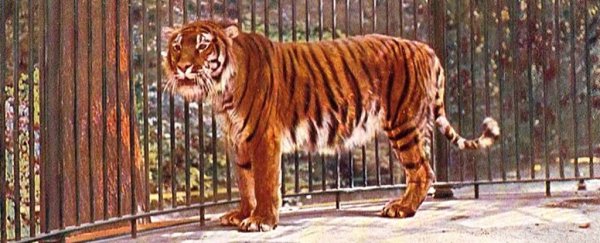Caspian tigers were some of the largest cats ever to roam the Earth, but they went extinct in the 1960s. Now, some scientists want to bring them back.
A new study, published in the journal Biological Conservation, lays out the plan to reintroduce the tigers using a subspecies, the Siberian tiger, which is genetically similar to the Caspian tiger.
The authors write in their paper that the Siberians tiger's "phenotype proves adaptable to the arid conditions of the introduction site".
In other words, they believe that the big cats - who primarily live in Russia's birch forests - could adapt well to the conditions of the sites in Central Asia where they would be reintroduced.
During their prime, Caspian tigers could be found in Turkey and through much of Central Asia, including Iran and Iraq, and in Northwestern China as well.
They went extinct in the middle of the 20th century because of hunting, habitat loss, and food shortages.
Poisoning and trapping were promoted by rewards in the former Soviet Union until the 1930s, and irrigation projects during the Soviet era destroyed the woodlands and reed beds that were critical tiger habitat, which caused the cats' prey to disappear too.
The team chose the new sites by considering how much people currently use the land, and found the most promising site was the Ili River delta and adjacent southern coast of Balkhash Lake, which is about 7,000 square kilometres large.
Wild boar, Bukhara deer, and roe deer would be the tigers' main source of prey in the area. As a result, the researchers add, their respective populations also need to be brought up to 'sustainable' levels. This could take more than a decade, however.
The study suggests that if about 40 tigers are introduced, there could be 100 of them walking around in 50 years time. This doesn't sound like a huge number, but when you consider that there are only about 500 Siberian tigers left in the wild, it could be an important addition.
"It is vital to restore wild ungulate (hoofed mammal) populations in the area… that alone could take five to 15 years," said Mikhail Paltsyn, conservationist and doctoral candidate at the State University of New York's College of Environmental Science and Forestry, in a statement.
Paltsyn also said that they'd have to make sure that people and tigers can live alongside each other.
Caspian tigers were generally smaller than Siberian tigers, but males could weigh up to 240 kg, and adults grew to about 10 ft (3 metres) long, which is larger than most big cats that are around today.
Lions are about 190 kg in weight, jaguars around 96 kg and leopards are a lot lighter at 31 kg.
This article was originally published by Business Insider.
